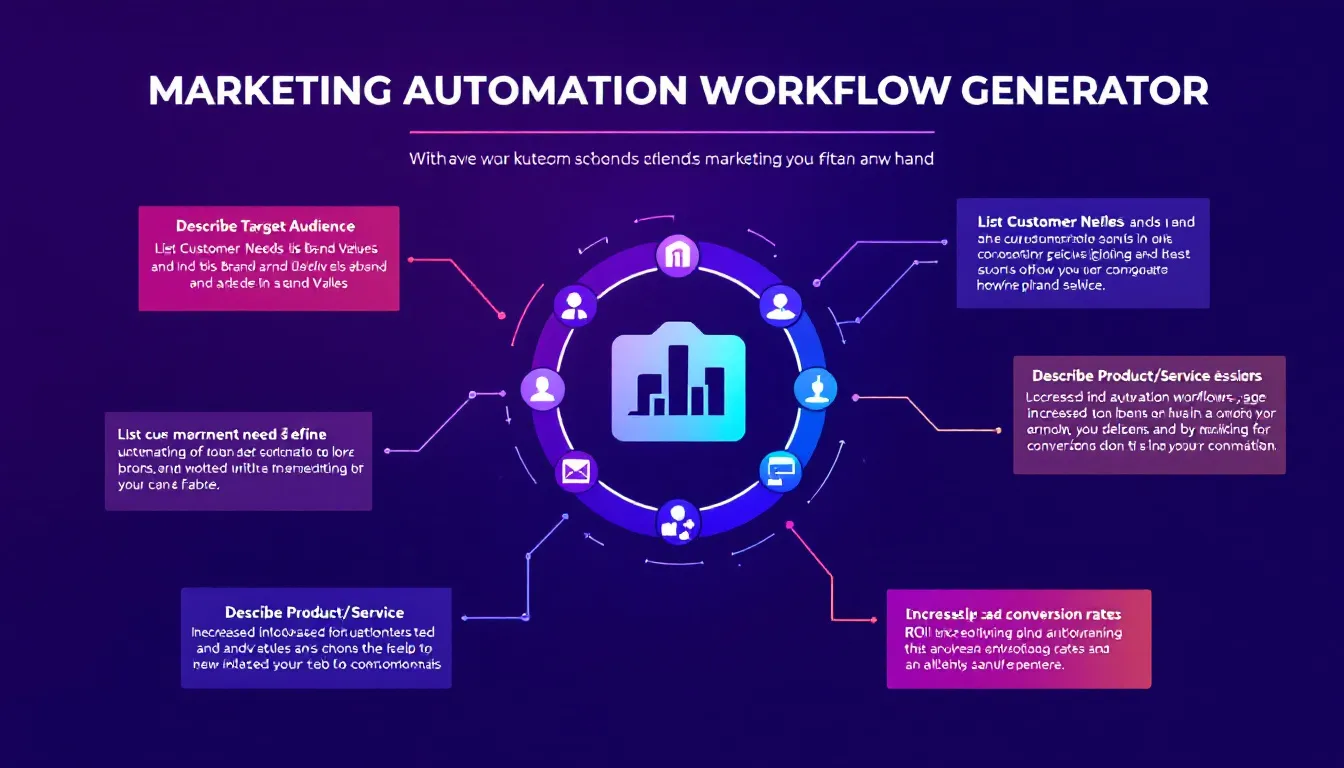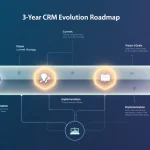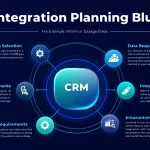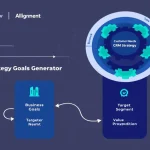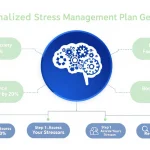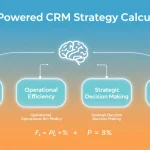Marketing Automation Workflow Generator
Is this tool helpful?
How to use the tool
Enter clear, specific information, then press “Generate Marketing Automation Workflow” to receive a sequenced plan you can copy straight into your email, CRM, or CX platform.
- Target Audience
• “Gen Z college commuters, 18-24, heavy podcast listeners, daily public-transport users.”
• “Mid-career nurses in rural hospitals, 30-50, value continuing education and peer support.” - Customer Needs & Pain Points
• “Limited Wi-Fi on campus, desire for offline study playlists, need time-saving tools.”
• “High burnout risk, looking for flexible training credits and mental-health resources.” - Brand Values & USPs
• “Carbon-neutral operations, lifetime warranty, instant setup.”
• “Clinician-led R&D, HIPAA-compliant data handling, 24 / 7 live chat.” - Product or Service
• “Bluetooth notebook that syncs voice notes to cloud when connected.”
• “Modular e-learning library with AR simulations and adaptive assessments.” - Generate & Implement
Copy the workflow, map each step to your automation platform (e.g., welcome email, nurture drip, re-engagement tag), and review timing, triggers, and personalisation tokens before launching.
Quick-Facts
- Average 14.5 % higher sales productivity after automation adoption (Nucleus Research, 2023).
- Typical platform costs range $50-$800 per month depending on contact volume (G2 Pricing Guide, 2024).
- GDPR and CCPA compliance requires explicit opt-in before any automated email (EU GDPR Portal, 2024).
- Open rates improve 20 % when emails match behavioural triggers (Campaign Monitor, 2023).
FAQ
What is the Marketing Automation Workflow Generator?
The generator is an AI-powered form that converts four strategic inputs into a multi-step, channel-agnostic workflow designed to nurture prospects from awareness to conversion in minutes.
Which data should you prepare?
Collect demographic profiles, top pain points, unique brand promises, and a concise product description—these fuel the AI’s segmentation logic and message sequencing.
How does the form process your input?
When you click “Generate,” the form sends your entries to a secured WordPress AJAX endpoint, which calls an LLM that returns HTML formatted steps you can copy instantly.
Can you edit the workflow after generation?
Yes. Paste the output into your marketing platform, then adjust timing, content tone, or channel assignments without altering the underlying trigger structure.
Does the tool integrate with major email platforms?
Any platform that accepts HTML workflows—Mailchimp, HubSpot, Klaviyo—can use the generated sequence after minor token mapping (Mailchimp Docs, 2024).
How secure is your data?
Inputs travel over HTTPS and are deleted from the server after processing; no data is stored for training or analytics (WP REST API Security Guide, 2023).
What results can you expect?
Firms adopting automation report a 25 % revenue lift within one year (Invesp, 2022) thanks to faster lead qualification and personalised journeys.
How often should you update your inputs?
Refresh audience and pain-point fields quarterly to reflect new customer insights; frequent updates keep messaging aligned with evolving buyer behaviour.
Important Disclaimer
The calculations, results, and content provided by our tools are not guaranteed to be accurate, complete, or reliable. Users are responsible for verifying and interpreting the results. Our content and tools may contain errors, biases, or inconsistencies. Do not enter personal data, sensitive information, or personally identifiable information in our web forms or tools. Such data entry violates our terms of service and may result in unauthorized disclosure to third parties. We reserve the right to save inputs and outputs from our tools for the purposes of error debugging, bias identification, and performance improvement. External companies providing AI models used in our tools may also save and process data in accordance with their own policies. By using our tools, you consent to this data collection and processing. We reserve the right to limit the usage of our tools based on current usability factors.
